Abstract
The cerebrospinal fluid pressure at the foramen of Monro in man in the recumbent position is less than 100 mm water relative to atmospheric pressure. The oscillations in the pressure wave due to respiration and cardiac pulsation vary with the actual pressure and increase as the overall pressure rises. In man lying horizontally the oscillation at the foramen of Monro is usually less than 50 mm water pressure, of which the cardiac component is about 15 mm and the respiratory component 35 mm water pressure. The fluid pressure within the cranial cavity is not uniform. In the recumbent face upwards position the pressure at the frontal pole is close to atmospheric or slightly subatmospheric but at the occipital pole is of the order of 160 to 190 mm water pressure. Examples are given showing the effect of posture on cerebrospinal fluid pressures in man and in the goat. The concentration of arachnoid granulations and venous lacunae near the vertex and the pressures in this region are discussed. The need for more precise methods of pressure measurement in the superior sagittal sinus is outlined by citing the Pitot tube. Pressure studies on patients with presenile dementia and dilated cerebral ventricles are reported.
Full text
PDF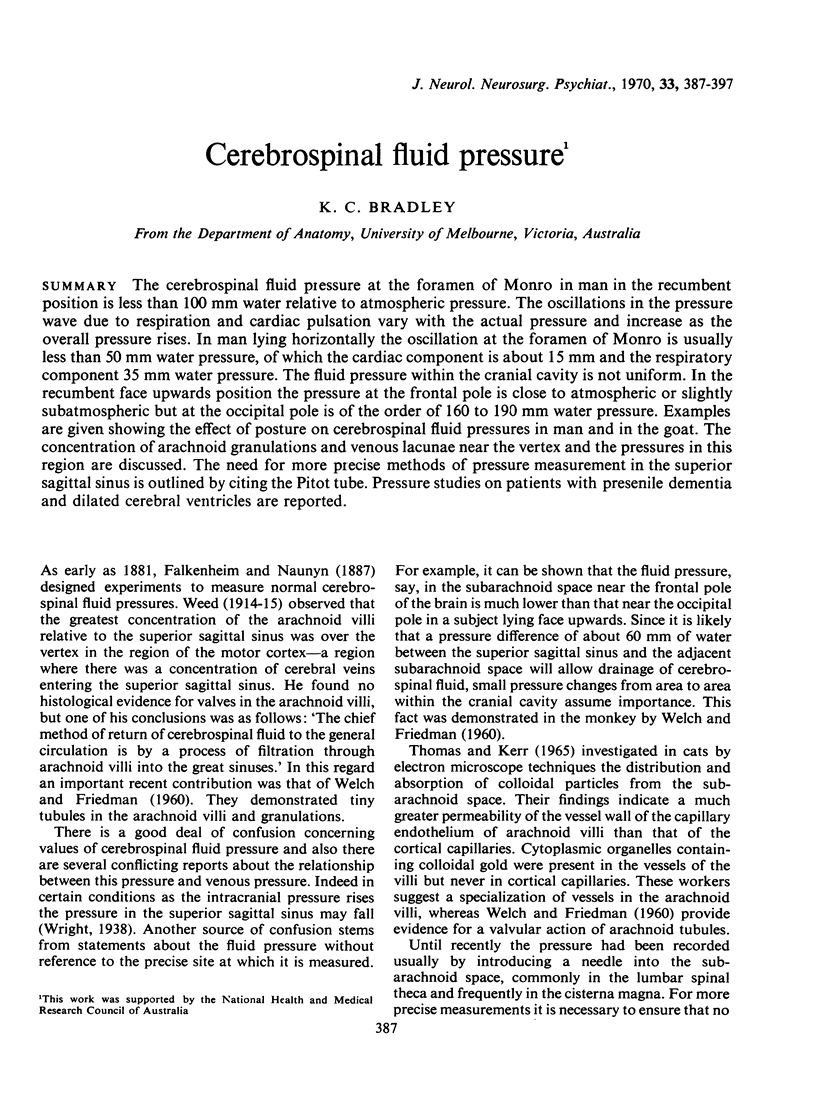
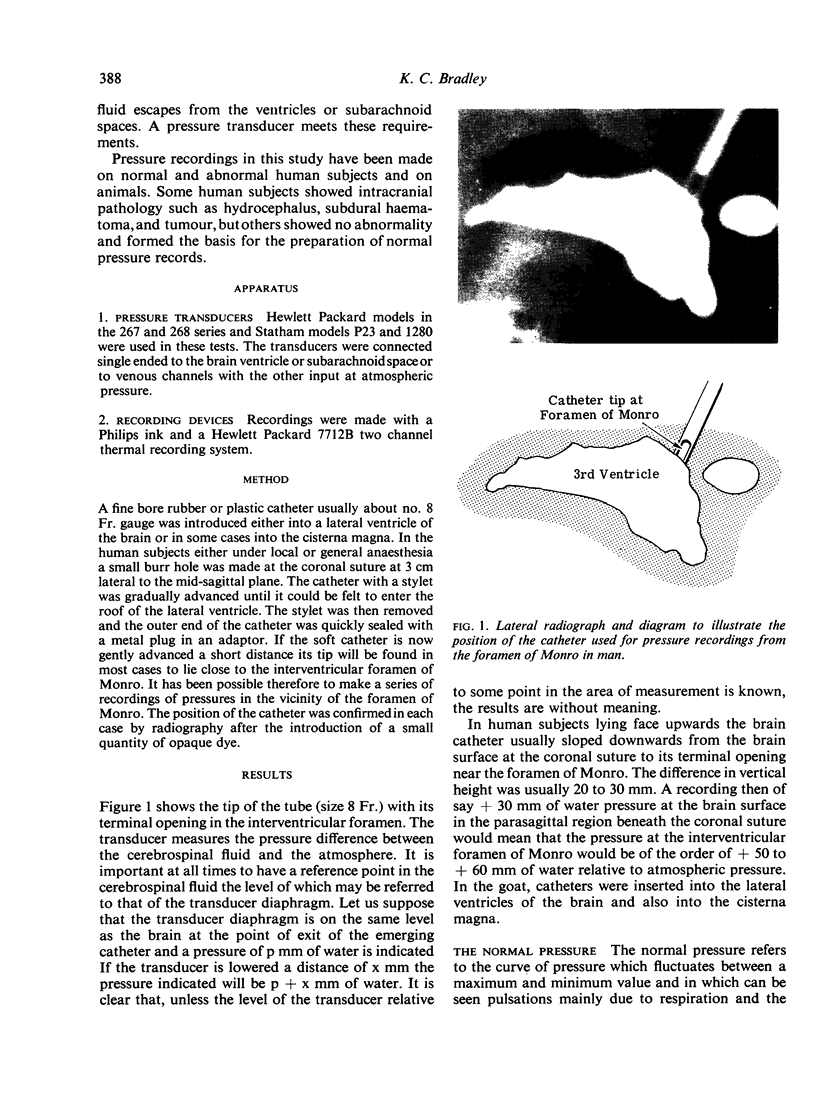
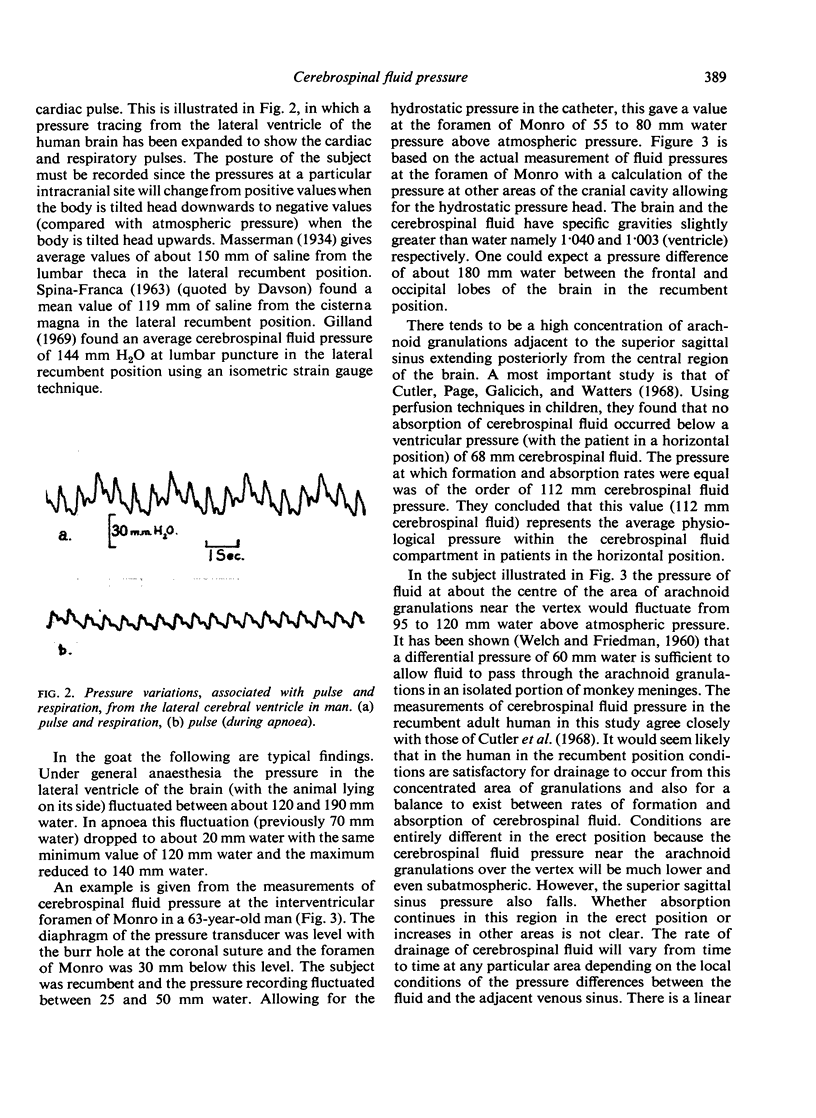
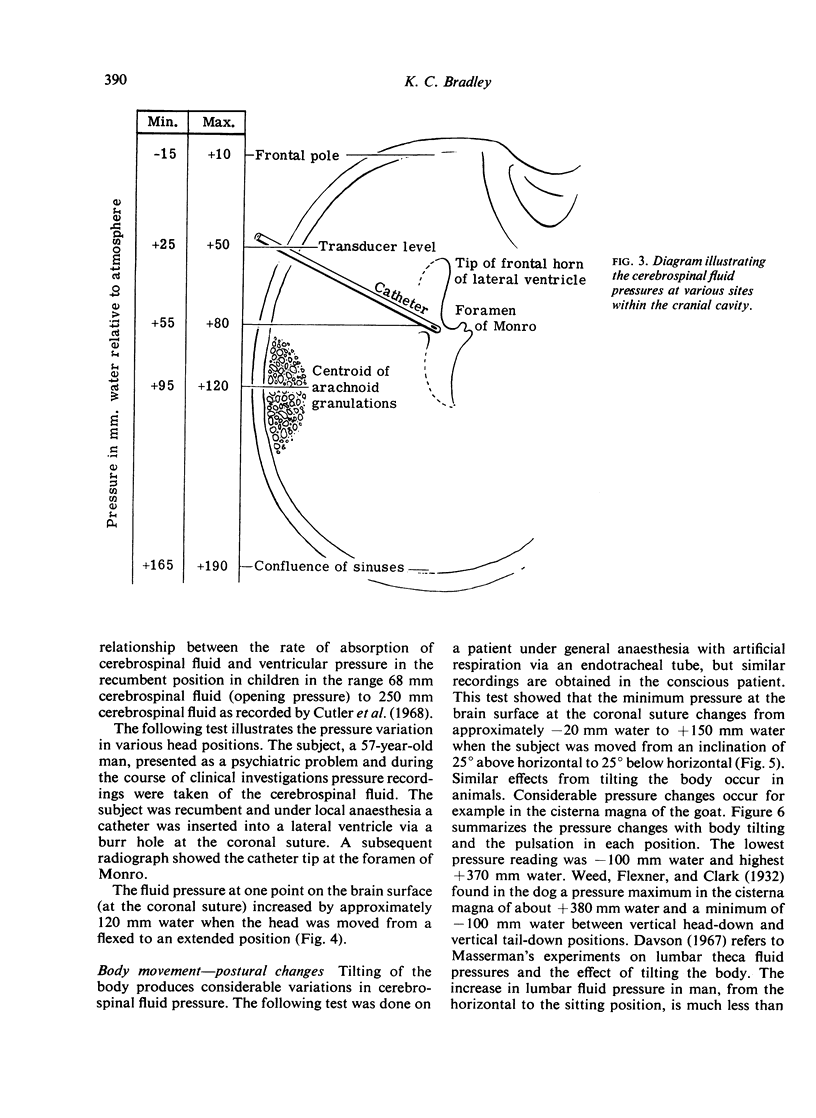
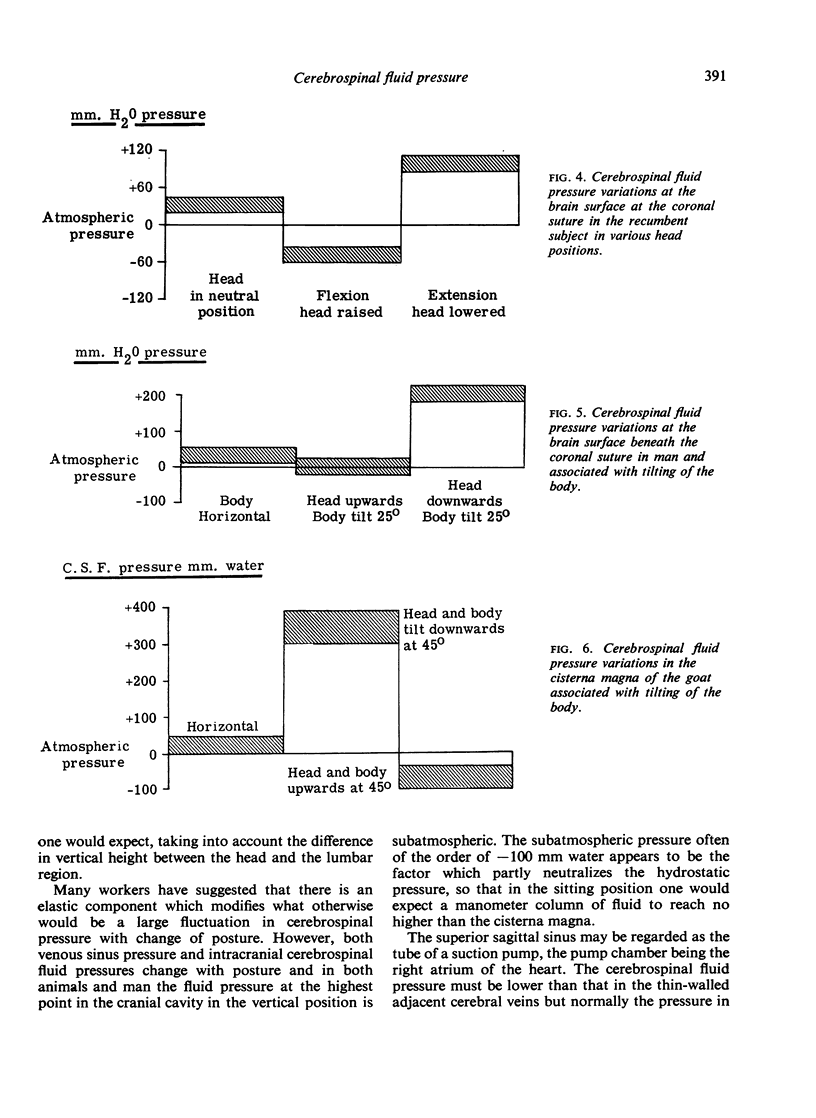
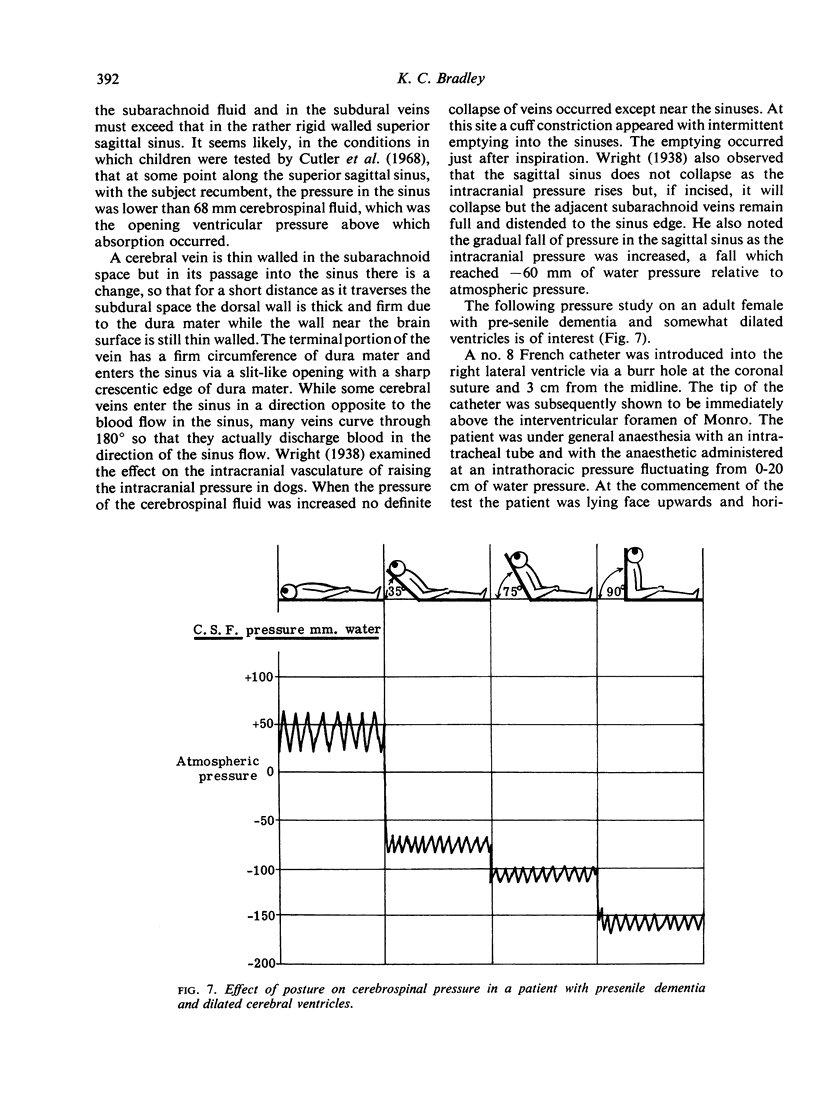
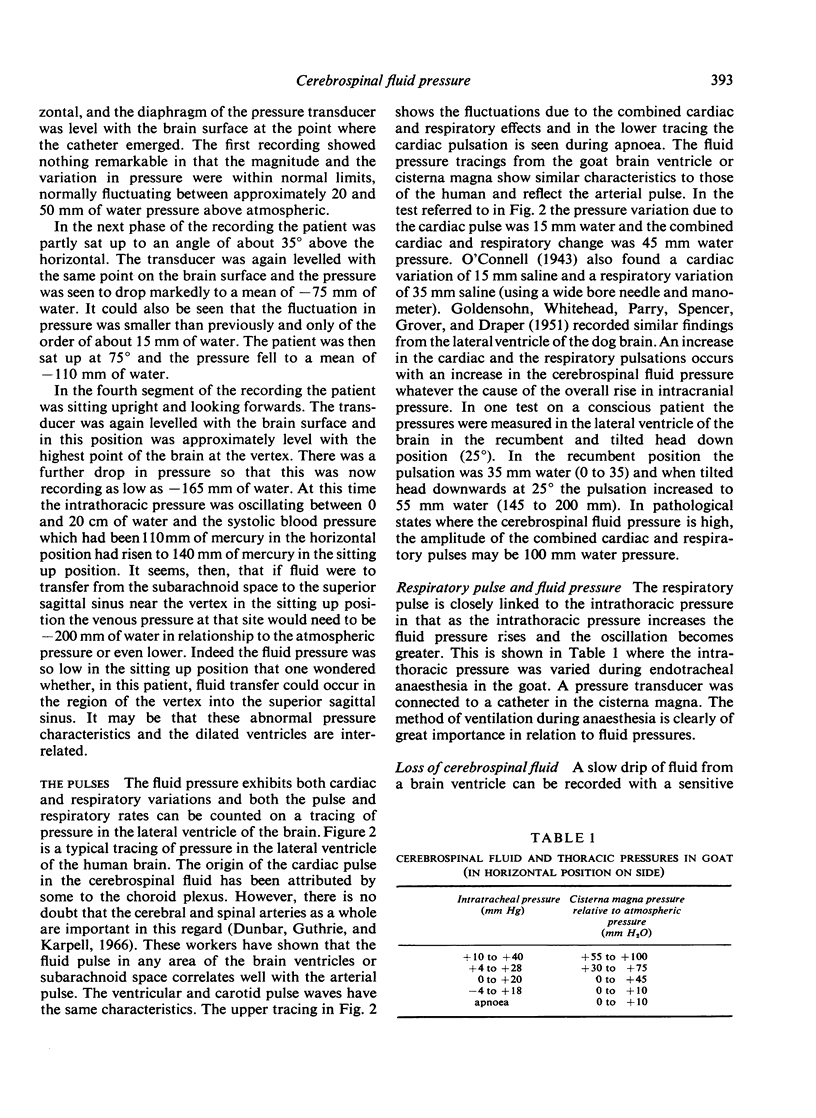
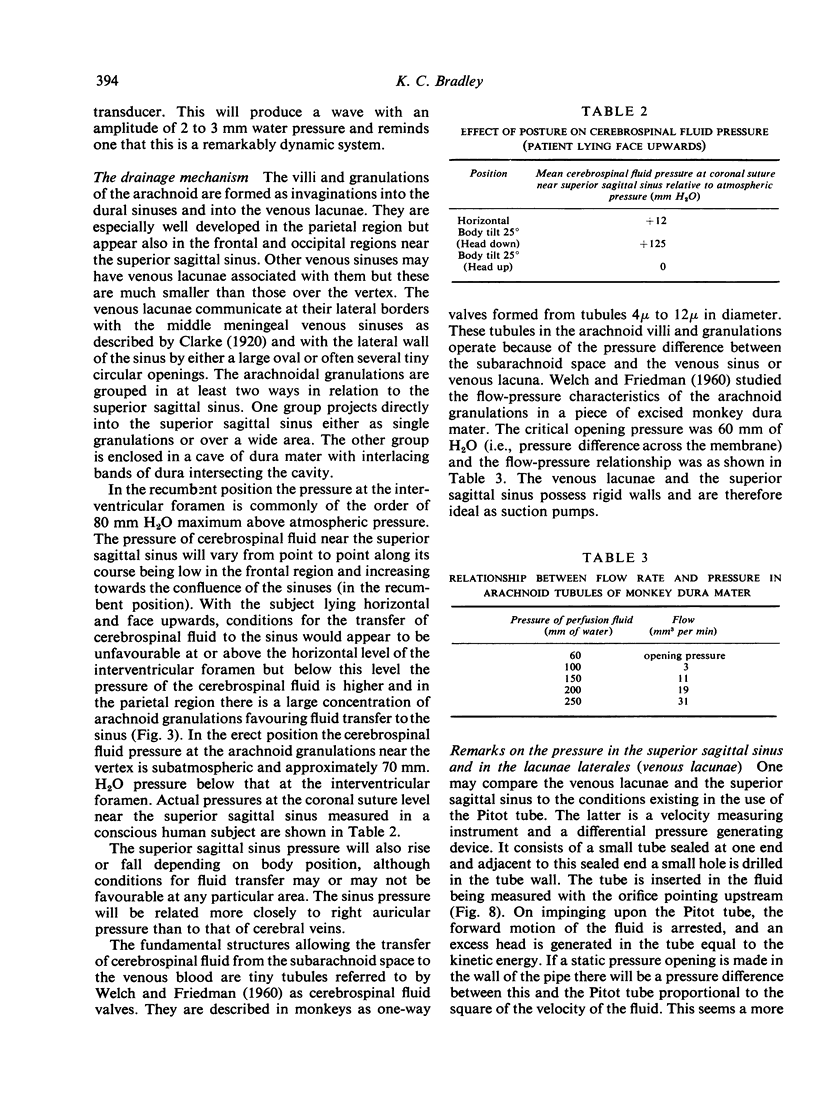
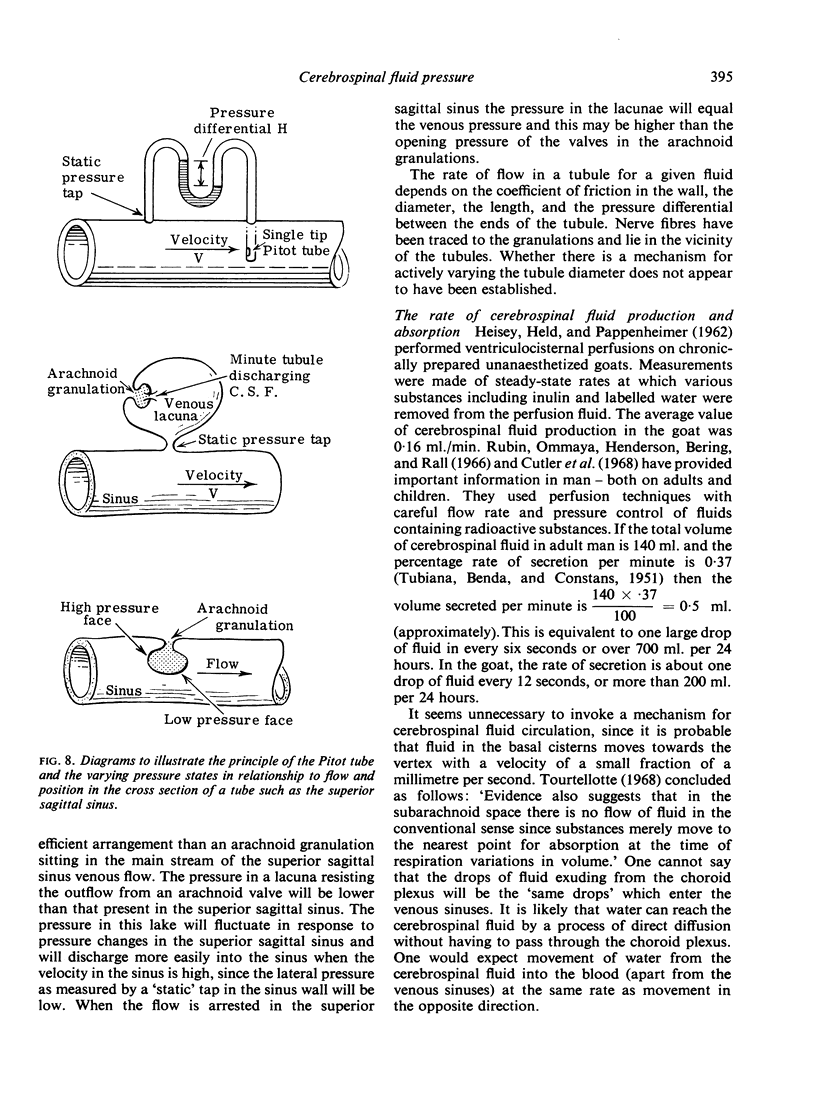
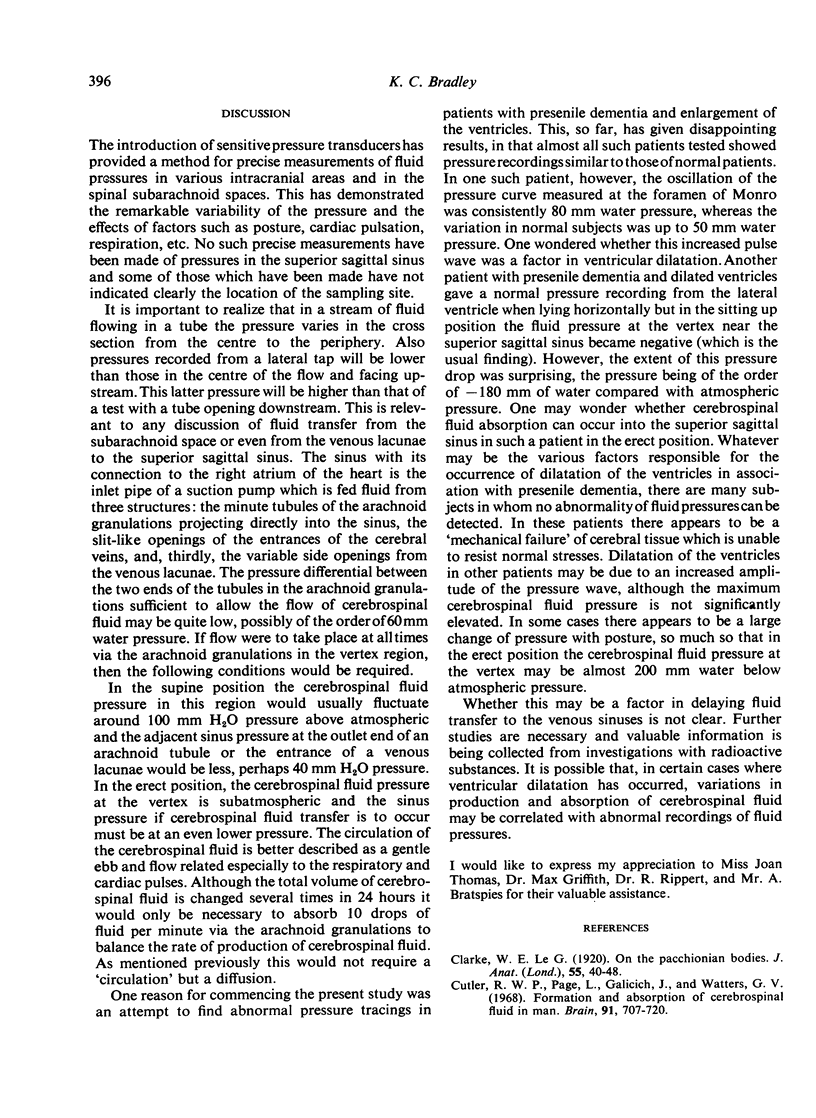
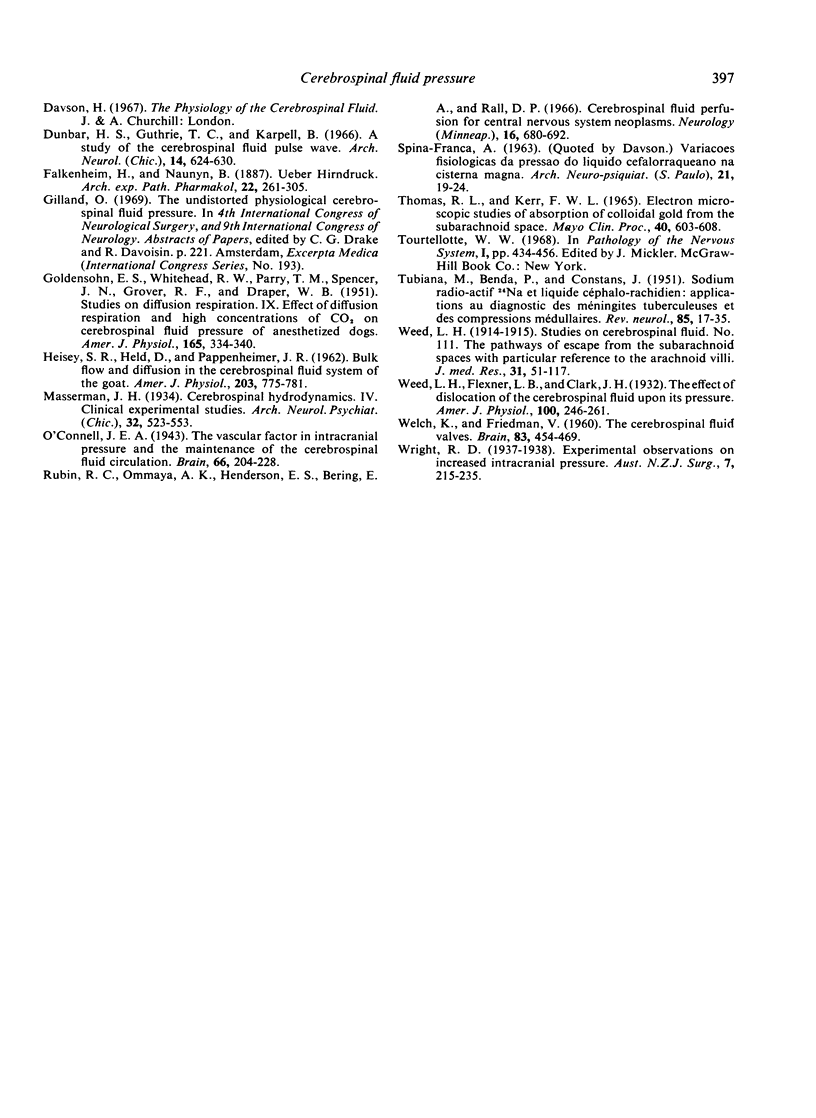
Images in this article
Selected References
These references are in PubMed. This may not be the complete list of references from this article.
- Cutler R. W., Page L., Galicich J., Watters G. V. Formation and absorption of cerebrospinal fluid in man. Brain. 1968;91(4):707–720. doi: 10.1093/brain/91.4.707. [DOI] [PubMed] [Google Scholar]
- Dunbar H. S., Guthrie T. C., Karpell B. A study of the cerebrospinal fluid pulse wave. Arch Neurol. 1966 Jun;14(6):624–630. doi: 10.1001/archneur.1966.00470120056009. [DOI] [PubMed] [Google Scholar]
- GOLDENSOHN E. S., WHITEHEAD R. W., PARRY T. M., SPENCER J. N., GROVER R. F., DRAPER W. B. Studies on diffusion respiration. IX. Effect of diffusion respiration and high concentrations of CO2 on cerebrospinal fluid pressure of anesthetized dogs. Am J Physiol. 1951 May;165(2):334–340. doi: 10.1152/ajplegacy.1951.165.2.334. [DOI] [PubMed] [Google Scholar]
- HEISEY S. R., HELD D., PAPPENHEIMER J. R. Bulk flow and diffusion in the cerebrospinal fluid system of the goat. Am J Physiol. 1962 Nov;203:775–781. doi: 10.1152/ajplegacy.1962.203.5.775. [DOI] [PubMed] [Google Scholar]
- Rubin R. C., Ommaya A. K., Henderson E. S., Bering E. A., Rall D. P. Cerebrospinal fluid perfusion for central nervous system neoplasms. Neurology. 1966 Jul;16(7):680–692. doi: 10.1212/wnl.16.7.680. [DOI] [PubMed] [Google Scholar]
- THOMAS R. L., KERR F. W. ELECTRON MICROSCOPIC STUDIES OF ABSORPTION OF COLLOIDAL GOLD FROM THE SUBARACHNOID SPACE. Mayo Clin Proc. 1965 Aug;40:603–608. [PubMed] [Google Scholar]
- TUBIANA M., BENDA P., CONSTANS J. Sodium radio-actif24 na et liquide céphalorachidien applications au diagnostic des meningites tuberculeuses et des compressions medullaries. Rev Neurol (Paris) 1951 Jul;85(1):17–35. [PubMed] [Google Scholar]
- WELCH K., FRIEDMAN V. The cerebrospinal fluid valves. Brain. 1960 Sep;83:454–469. doi: 10.1093/brain/83.3.454. [DOI] [PubMed] [Google Scholar]
- le Gros Clark W. E. On the Pacchionian Bodies. J Anat. 1920 Oct;55(Pt 1):40–48. [PMC free article] [PubMed] [Google Scholar]




